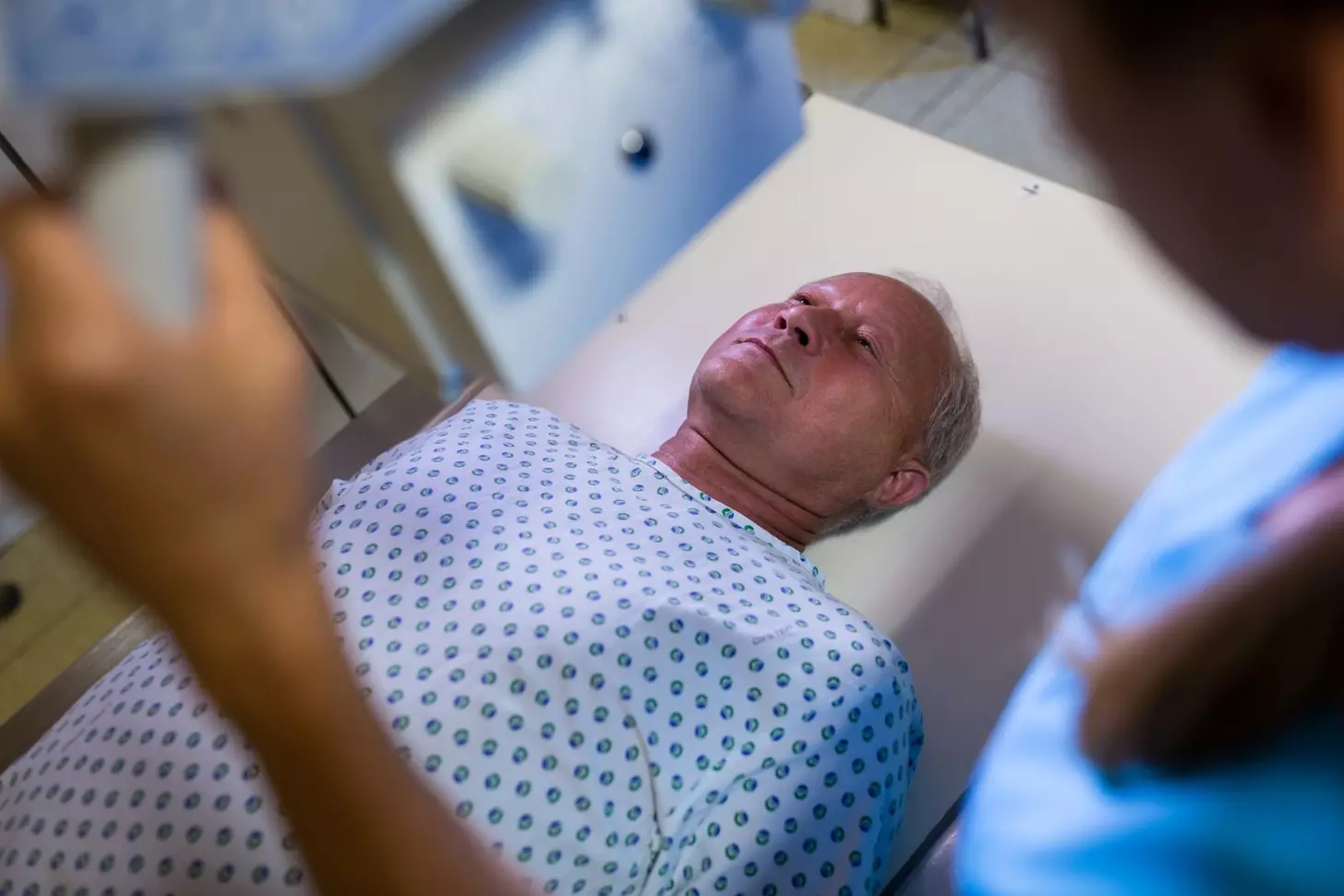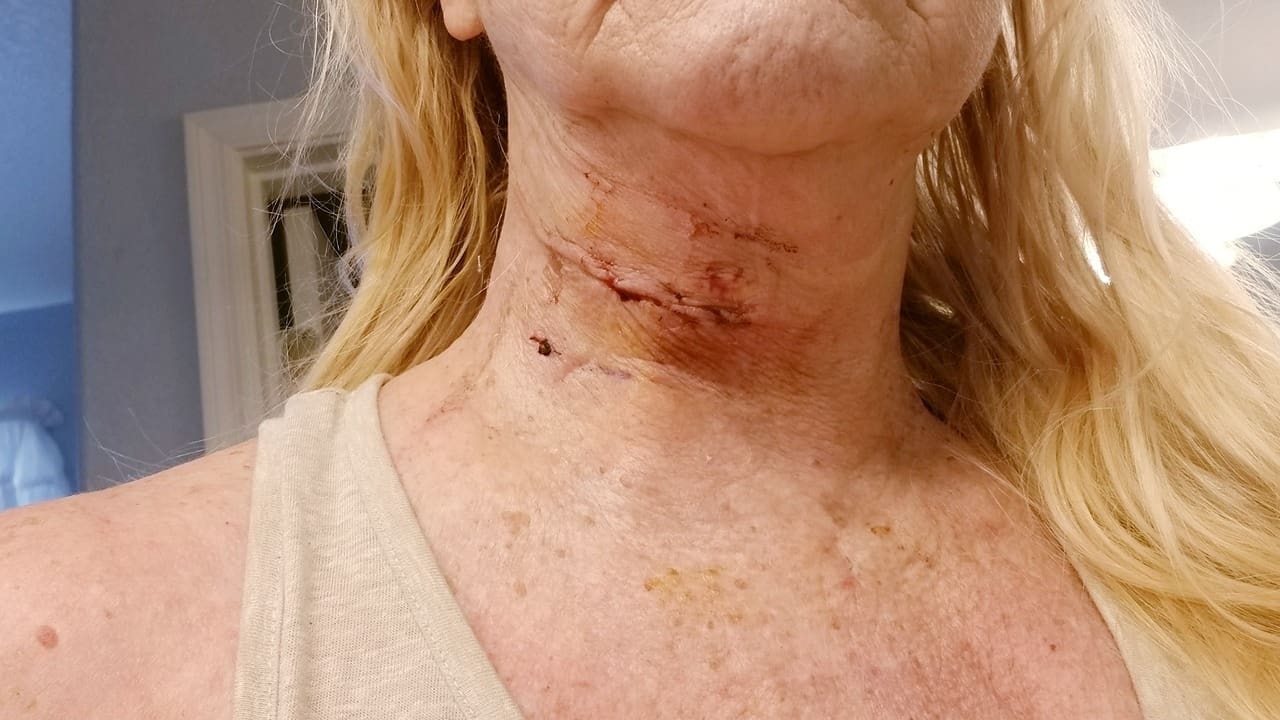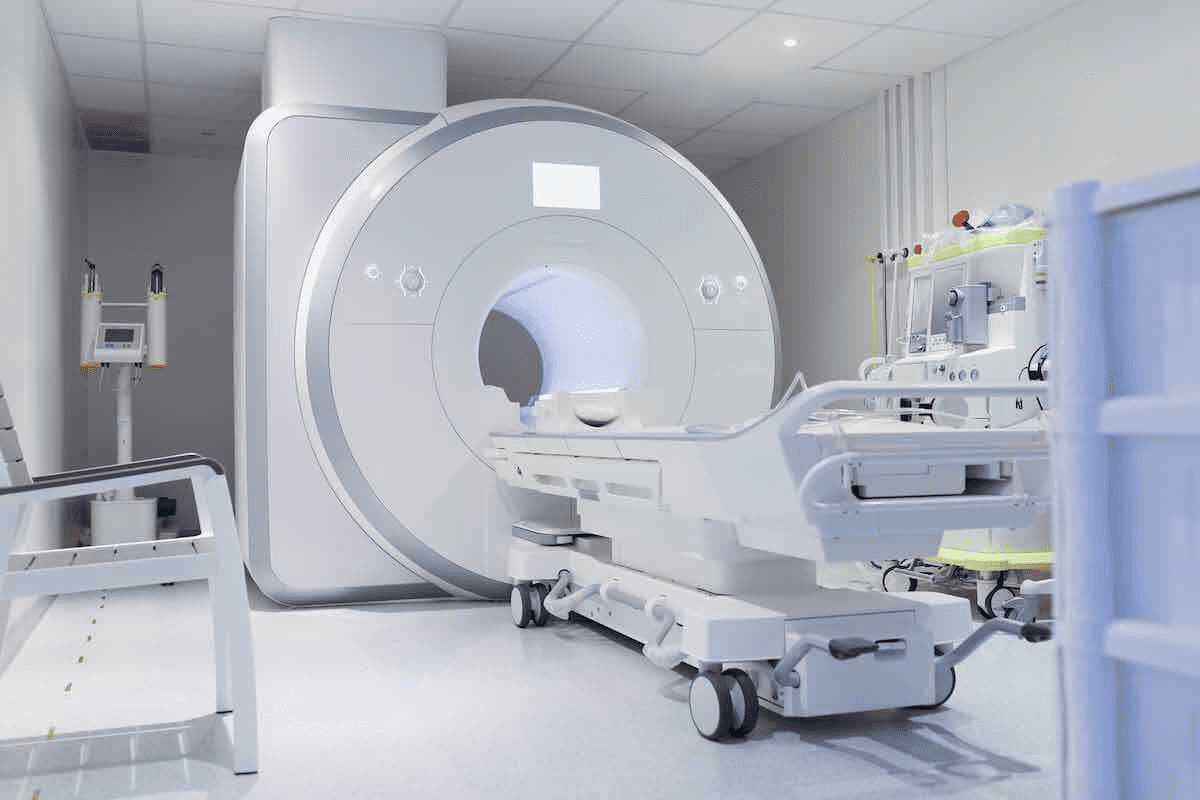Last Updated on November 26, 2025 by Bilal Hasdemir
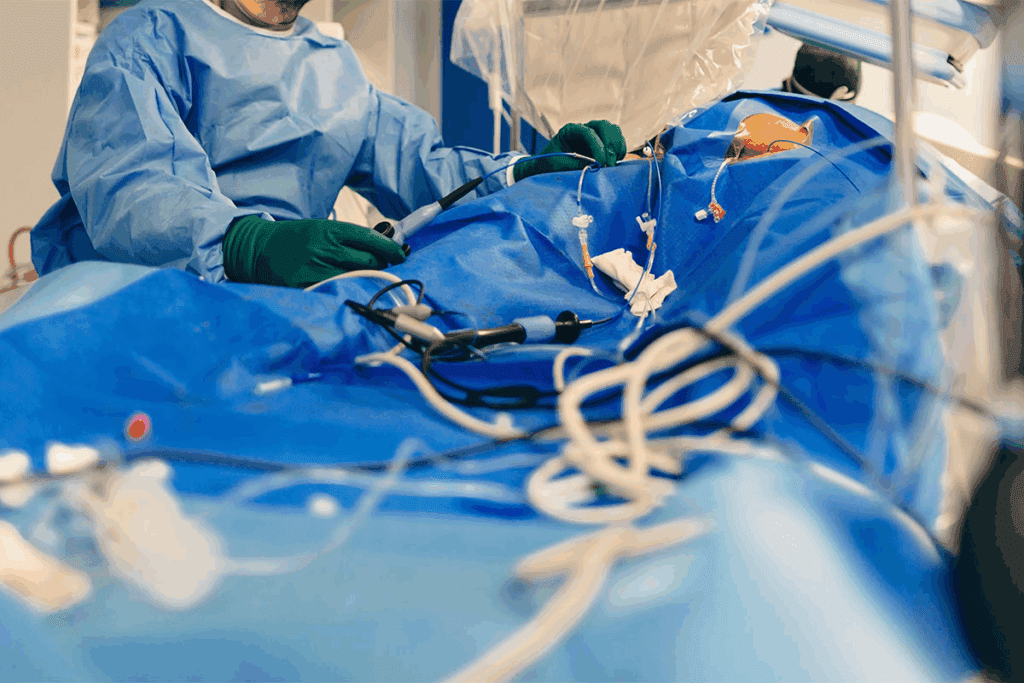
Catheter ablation is a procedure to treat heart rhythm problems. It creates small scars in heart tissue to stop irregular signals. At Liv Hospital, we know you might worry about pain.
Learn does ablation hurt, what pain to expect, and safety tips during catheter ablation.
We are here to reassure you that catheter ablation is safe. We do everything we can to make you comfortable. Some might feel a bit of pain or discomfort, but we use the latest methods to help you heal well.
We want to tell you about the procedure’s safety and what pain you might feel. Our team is dedicated to your care. You can trust us to take good care of you.
Key Takeaways
- Catheter ablation is a minimally invasive procedure to treat abnormal heart rhythms.
- The procedure is generally safe, with measures in place to minimize discomfort.
- Some patients may experience mild pain or discomfort during or after the procedure.
- Advanced techniques and care are used to ensure a smooth recovery.
- Liv Hospital is committed to providing world-class healthcare delivery with international patient support.
Understanding Catheter Ablation: The Procedure Explained
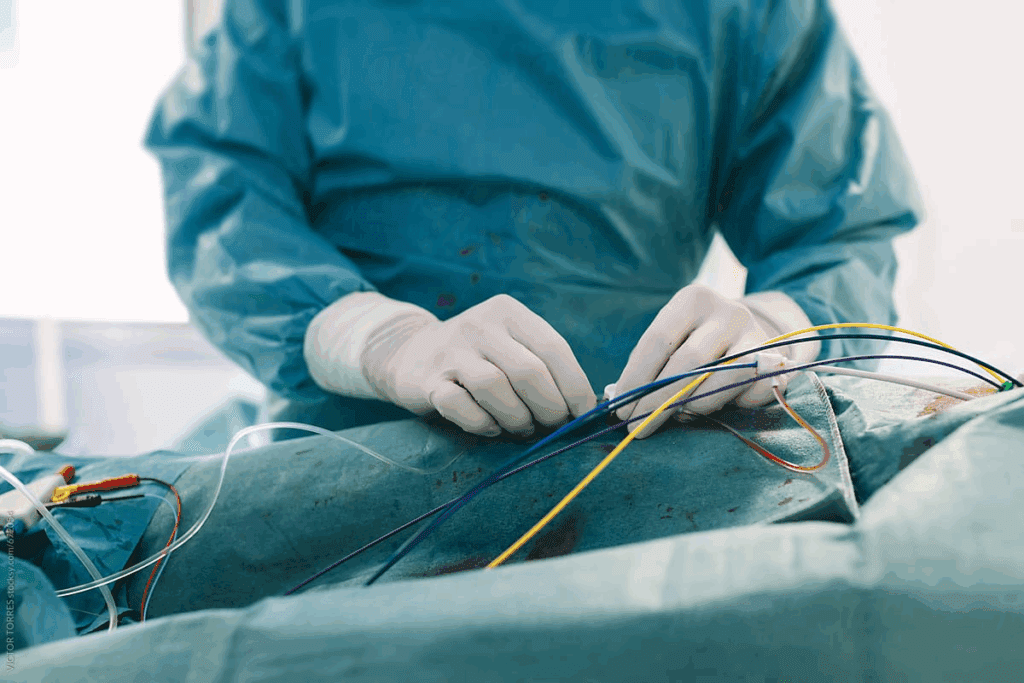
Learning about catheter ablation is key for those thinking about it. It’s a complex medical treatment for heart issues. It uses advanced technology to fix heart problems.
What Is Catheter Ablation and How Does It Work?
Catheter ablation uses thin, flexible wires called catheters. These wires go through blood vessels to the heart. They create scar tissue to fix irregular heart rhythms.
The process starts with inserting catheters through a vein in the groin or neck. Doctors use X-ray imaging to guide them to the heart. Then, they map the heart’s electrical activity to find the problem.
Key steps in the catheter ablation process include:
- Insertion of catheters through a vein
- Guiding catheters to the heart using X-ray imaging
- Mapping the heart’s electrical activity
- Applying energy to create scar tissue
Common Heart Conditions Treated with Ablation
Catheter ablation treats heart issues like SVT, atrial flutter, and atrial fibrillation. These problems cause symptoms like palpitations and shortness of breath.
By making scar tissue, catheter ablation can fix abnormal heart rhythms. Doctors usually suggest it after trying other treatments.
What Does a Heart Ablation Actually Do to Heart Tissue?
During catheter ablation, the catheter sends energy to the heart tissue. This energy makes scar tissue, stopping the abnormal electrical signals.
The energy used can be radiofrequency or cryoablation (freezing). The choice depends on the condition and the doctor’s preference.
Catheter ablation is a top choice for many arrhythmia patients. It greatly improves their quality of life. Knowing how it works helps patients make better decisions about their health.
Does Ablation Hurt? Pain Expectations During the Procedure
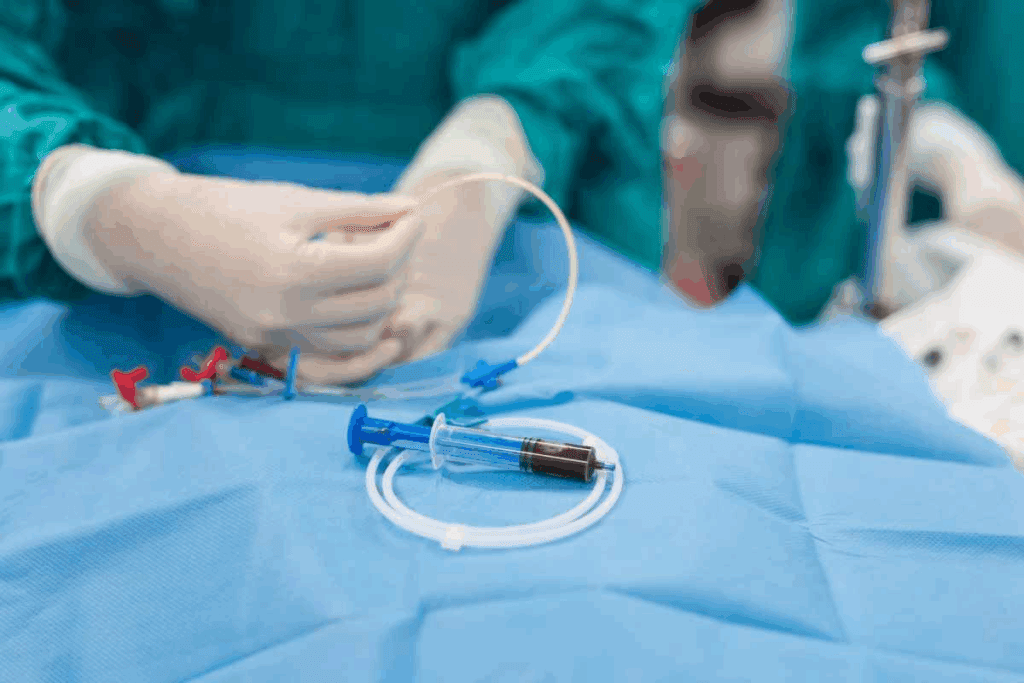
Many people wonder if ablation hurts. They want to know what to expect during the procedure, like pain and discomfort. It’s a big concern for those thinking about this cardiac treatment.
Are You Put Under for an Ablation?
During a catheter ablation, patients get sedation to relax and feel less pain. The sedation level can vary. Some patients stay awake but relaxed, while others sleep more deeply. This choice depends on the patient’s health and the procedure’s complexity.
Do Catheters Hurt During Insertion?
Inserting catheters is done with local anesthesia to avoid pain. Patients might feel a brief stinging when the anesthetic is given. Once numb, the catheter insertion shouldn’t hurt, though some might feel pressure.
Sensations You May Experience While Sedated
Even under sedation, patients might feel different things. Some might feel mild discomfort or pressure at the catheter site. Others might notice their heartbeat or feel warmth during the ablation. These feelings are usually short-lived and manageable.
Pain Management Techniques Used by Medical Teams
Medical teams use many ways to manage pain during catheter ablation. These include:
- Local anesthesia to numb the catheter insertion site
- Sedation to help patients relax
- Monitoring of the patient’s comfort level throughout the procedure
- Adjusting sedation as needed to maintain comfort
Good pain management is key for a successful procedure and a better patient experience. Our medical teams work hard to keep patients comfortable during treatment.
| Pain Management Technique | Purpose | Benefits |
| Local Anesthesia | Numb the catheter insertion site | Reduces pain during catheter insertion |
| Sedation | Help patients relax | Reduces anxiety and discomfort |
| Monitoring | Track patient’s comfort level | Allows for adjustments to be made |
The Catheter Ablation Procedure: Step by Step
We will guide you through the catheter ablation procedure step by step. This will give you a clear understanding of what to expect from start to finish.
Pre-Procedure Preparation
Before the procedure, pre-procedure preparation is key. You’ll have a detailed medical check-up. You might need to stop taking certain medicines and talk about any allergies or concerns with your doctor.
You’ll be asked not to eat or drink for a while before the procedure. Also, make sure someone can drive you home because you might feel sleepy from the sedation.
What Happens in the Electrophysiology Lab
The electrophysiology lab is where the procedure happens. When you arrive, you’ll lie on a table. Devices will be attached to monitor your heart and other important signs.
Catheters will be inserted through your blood vessels. They will be guided by X-ray to your heart. The catheters will map your heart’s electrical activity and find the source of the arrhythmia.
Duration and Patient Experience
The procedure usually lasts between 2 to 4 hours. During this time, your experience is closely watched. Sedation is used to help you relax and reduce any discomfort.
Some people might feel heartbeats or mild pain. These feelings are usually short-lived and managed by your medical team.
Differences Between Cardiac and Vein Ablation Procedures
It’s important to know the differences between cardiac and vein ablation procedures. Cardiac ablation treats heart arrhythmias by destroying abnormal electrical pathways. Vein ablation, on the other hand, treats varicose veins by closing off bad veins.
| Procedure Aspect | Cardiac Ablation | Vein Ablation |
| Purpose | Treats heart arrhythmias | Treats varicose veins |
| Location | Heart | Leg veins |
| Method | Catheter-based, targets abnormal electrical pathways | Catheter-based, closes off problematic veins |
Knowing these differences helps you prepare better for your procedure and what to expect during recovery.
Immediate Post-Procedure Sensations and Discomfort
Knowing what to expect after catheter ablation can ease worries about feelings and discomfort after. Patients may feel different sensations as they recover. These feelings are usually temporary.
Common Feelings After Waking from Sedation
Patients often feel groggy or disoriented after waking from sedation. This feeling is similar to what happens after a general anesthetic. It usually goes away in a few hours.
Common sensations include drowsiness, confusion, and a dry mouth. These come from the sedation used during the procedure.
Groin Cardiac Ablation Incision: Care and Discomfort
The area where the catheter was inserted may feel sore or tender. This discomfort can be managed with over-the-counter pain medication.
Proper care of the groin incision site is key to prevent infection and aid healing. Patients should keep the area clean and dry.
Chest Sensations Following Ablation
Some patients may feel chest sensations or discomfort after cardiac ablation. These can range from mild palpitations to tightness in the chest.
It’s essential to note that while some discomfort is normal, severe chest pain or trouble breathing needs immediate medical attention.
Does Vein Ablation Hurt Differently Than Cardiac Ablation?
Vein ablation, used for varicose veins, can cause different sensations than cardiac ablation. Patients may feel bruising, swelling, or a pulling sensation in the treated leg.
| Aspect | Cardiac Ablation | Vein Ablation |
| Primary Discomfort | Groin soreness, chest sensations | Bruising, swelling, pulling sensation in the leg |
| Recovery Time | Typically a few days | Can vary, often a few weeks for full recovery |
| Common Sensations | Palpitations, fatigue | Tingling, numbness in the treated leg |
Knowing these differences helps patients prepare for their specific recovery, whether it’s cardiac or vein ablation.
Pain After Ablation: What to Expect During Recovery
Knowing about pain after ablation helps patients recover better. Catheter ablation is safe and effective for some heart issues. But, it can cause some discomfort during recovery. We’ll explain what pain you might feel and how to handle it.
First 24-48 Hours Post-Procedure
In the first 24 to 48 hours, you might feel some pain, soreness, or tiredness. This is normal. The pain could be from where the catheter was inserted, your heart, or just general soreness.
It’s important to manage pain early on. Your healthcare team will give you instructions on how to do this. They might suggest ways to manage pain.
Managing Discomfort at Home
When you go home, managing pain is key. Your doctor might recommend over-the-counter pain meds for mild to moderate pain. Always follow the dosage they tell you to.
There are other ways to ease pain too. Resting, using cold or warm compresses, and eating well can help. These steps can make your recovery smoother.
When to Contact Your Doctor About Pain
Some pain is okay, but severe or worsening pain needs attention. If you have pain with fever, swelling, or redness, call your doctor. These signs mean you might need help.
Pay attention to any special instructions from your healthcare team. Being proactive and talking to your doctor can help manage pain well.
| Symptom | Action |
| Mild pain or discomfort | Manage with over-the-counter pain medication as directed |
| Severe pain or worsening discomfort | Contact your doctor immediately |
| Pain with fever, swelling, or redness | Seek medical attention |
Understanding pain and how to manage it during recovery is key. By following your healthcare team’s advice, you can have a successful recovery after catheter ablation.
Heart Catheter Ablation Side Effects: Common and Rare
It’s important for patients to know about the side effects of heart catheter ablation. This treatment is usually safe but comes with some risks. We’ll cover the possible side effects, from common and temporary to rare but serious ones.
Expected Temporary Side Effects
Most people have some side effects after catheter ablation. These are usually short-term. Common side effects include:
- Soreness or bruising at the catheter site
- Fatigue or feeling tired
- Mild chest discomfort
- Irregular heartbeats or palpitations
These side effects usually go away within a few days to a week after the procedure.
Uncommon Complications
While rare, serious complications can happen. These may include:
- Infection at the catheter site
- Bleeding or hematoma
- Damage to the heart or blood vessels
- Stroke or transient ischemic attack (TIA)
It’s key to watch for signs of these complications. Look out for severe pain, trouble breathing, or severe bleeding. If you notice these, get medical help right away.
Long-Term Considerations
For most, catheter ablation works well in the long run. But, some might need more treatments or ongoing care. Long-term things to think about include:
- The need for more ablation or other treatments
- Keeping an eye on heart health
- Managing conditions that led to the heart issue
Seeing your healthcare provider regularly is important. It helps keep track of how well the procedure is working and deals with any new problems.
How Safe Is Catheter Ablation? Understanding the Risks
Catheter ablation is a procedure that treats heart conditions. But is it safe? We’ll look at its safety, risks, and compare it to other treatments. This will help you understand this procedure better.
Statistical Safety Profile of Modern Ablation Procedures
Catheter ablation is considered safe, with a low risk of serious problems. Studies show the complication rate is between 2% and 6%. Major issues like cardiac tamponade or stroke are rare, happening in less than 1% of cases.
Statistical data shows catheter ablation is safe. For example, a study found a 3.2% complication rate in 1,000 patients. Most complications were minor and temporary.
Is Catheter Ablation Dangerous? Addressing Common Concerns
While catheter ablation is generally safe, there are risks. These include bleeding, vascular problems, and temporary heart rhythm issues. But serious problems are rare.
So, is catheter ablation dangerous? It’s not completely risk-free, but it’s considered safe when done by experienced doctors on the right patients.
Risk Factors That May Increase Complications
Some factors can raise the risk of complications during or after catheter ablation. These include:
- Advanced age
- Presence of multiple chronic health conditions
- Complex heart disease
- History of previous cardiac procedures
Knowing these risk factors helps doctors assess the safety for each patient.
Comparing Ablation Safety to Alternative Treatments
It’s important to compare catheter ablation’s safety to other treatments. For many, it’s a safer and more effective option than long-term medication or other invasive procedures.
A comparative analysis shows catheter ablation often has a better risk-benefit ratio. This is true for patients with certain arrhythmias who haven’t responded to other treatments.
Recovery Timeline and Practical Considerations
Knowing the recovery timeline is key for patients getting catheter ablation. We’ll walk you through what to expect right after, how to get back to normal, and long-term results.
First Week After Ablation
The first week is all about recovery and getting used to things. Most people can start doing normal things in a few days to a week. But, it’s important to follow your doctor’s advice on rest, meds, and check-ups. You might feel tired, which is okay.
Gradual Return to Physical Activities
When you can start doing physical stuff again, your doctor will tell you. This usually happens in a week or two, based on your health and what you do every day. It’s important to listen to your body and not push too hard, too fast.
Long-Term Success Rates and Follow-Up Care
Catheter ablation works well for some heart issues. Success rates vary by condition, but many see big improvements or no symptoms at all. Regular check-ups are key to keep an eye on how you’re doing and handle any issues.
How Much Is an Ablation? Cost and Insurance Considerations
The price of catheter ablation changes a lot. It depends on where you are, the place’s fees, and your insurance. Talking to your doctor and insurance about costs is a must to know what you’ll pay. Many insurances cover it if it’s needed for health reasons.
Understanding the recovery and practical stuff helps you get ready for catheter ablation. It lets you make smart choices about your care.
Conclusion: Making an Informed Decision About Catheter Ablation
Catheter ablation is a complex procedure. It needs a deep understanding of its benefits, risks, and recovery. This knowledge helps patients make informed decisions about their care.
This treatment is effective for many heart conditions. It can relieve symptoms and improve life quality. But, it also has risks and complications. It’s important to consider these when deciding on catheter ablation.
We suggest talking to your healthcare provider about your situation. Ask about the procedure, possible outcomes, and recovery. This way, you can make a confident decision about catheter ablation. It’s a step towards a healthier heart.
FAQ
Does ablation hurt?
Most people feel little pain during catheter ablation because of sedation and local anesthesia. Some might feel a pinch or pressure, but it’s rare to feel a lot of pain.
Is catheter ablation painful?
Catheter ablation is usually not painful. Some might feel a bit of discomfort or sensation during or after it. Our team works hard to make sure you’re comfortable.
Are you put under for an ablation?
Yes, patients get sedation or local anesthesia to relax and feel less pain during the procedure. The amount of sedation depends on your needs and the procedure’s complexity.
Do catheters hurt during insertion?
Inserting catheters is done with local anesthesia, which numbs the area. You might feel a pinch or pressure, but it’s brief.
What does a heart ablation do?
Heart ablation uses energy to create scar tissue. This helps fix irregular heart rhythms by stopping the bad electrical pathways.
How safe is catheter ablation?
Catheter ablation is generally safe with a low risk of problems. But, like any medical procedure, there are risks. Our team will talk about these with you.
Is catheter ablation dangerous?
While there are risks, serious problems are rare. Our experienced team takes all precautions to make sure it’s safe and effective.
Can you have an ablation more than once?
Yes, you can have more than one catheter ablation if needed. This might happen if the first one doesn’t work or if arrhythmia comes back.
How much is an ablation?
The cost of catheter ablation varies. It depends on where you are, your insurance, and your procedure’s specifics. Check with your insurance for details on costs.
What are the common side effects of catheter ablation?
You might feel bruising, discomfort, fatigue, or mild chest pain after the procedure. Serious problems like infection or heart damage are rare but can happen.
How long is the recovery after catheter ablation?
Recovery times differ, but most people can get back to normal in a few days to a week. Avoiding strenuous activities for longer might be needed, as your doctor advises.
Does vein ablation hurt differently than cardiac ablation?
Vein ablation is less invasive than cardiac ablation. It might cause less discomfort because it doesn’t involve the heart directly.
What is the success rate of catheter ablation?
Success rates vary based on the arrhythmia type and individual factors. Our team will discuss what to expect based on your condition.
How safe is an ablation?
Ablation is safe when done by skilled professionals. Most patients don’t face serious problems during the procedure.
What are the long-term considerations after catheter ablation?
You might need to watch for arrhythmia coming back, take medication, and have follow-up care. Our team will guide you on what to expect and how to manage your heart health after the procedure.
References
Wallace, K. (2020). Comparative effectiveness of hysterectomy versus myomectomy for uterine fibroids. The Journal of Reproductive Medicine, 45(3), 204-213.
https://pubmed.ncbi.nlm.nih.gov/32192594/


